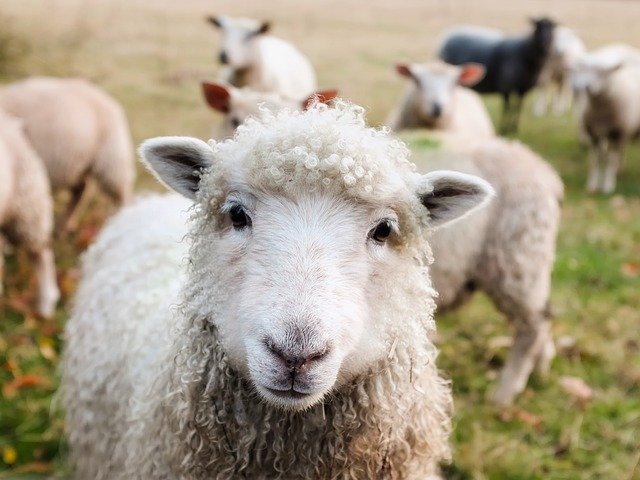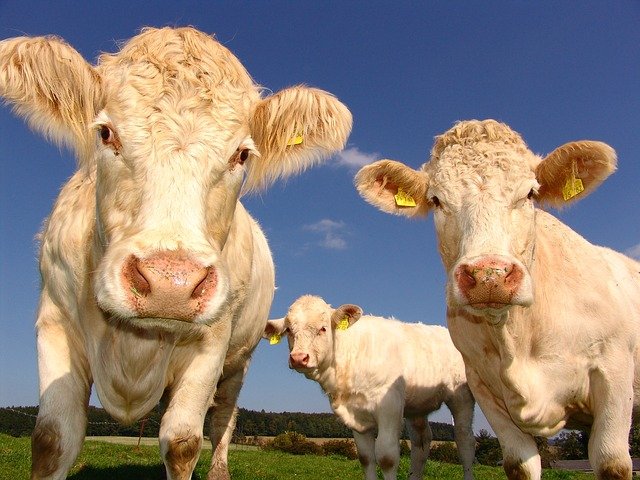Sheep farming is generally described as ‘commercial breeding of sheep for meat, milk and wool processing.’ It is a traditional business for the communities of several countries worldwide. However, sheep farming is not a successful choice for industrial milk processing. Sheep are ideal for the processing of meat and wool.
You must have adequate facilities such that both small and big Sheep can be raised. It should be acknowledged that the sector of sheep farming is a very lucrative venture. You can desire to earn handsome sheep farming profit within a short period, you can get your savings back. However, create a solid business plan and operate accordingly before beginning a sheep farming company.
Here we will tell you about the benefits of sheep farming. Why should you raise Sheep? What are the conventional sheep breeding methods? And the right ideas for sheep raising.
Also read; Biofloc Fish Farming – A Complete Guide
Sheep Farming Profit – Why Should You Go For It?

Sheep are primarily bred for their development of fur, meat, skin, and manure. Sheep meat is not only quite tasty; it is healthy and famous among all styles of people worldwide. If you decide to find the most successful business then sheep farming may be an outstanding idea as it is a decent source of revenue and for eradicating deprivation from the dry, desert, semi-arid, and mountainous regions.
Look at some of the points below that are must know before you dream to accumulate sheep farming profit.
- Sheep farming needs less labor than any other cattle growing business.
- You don’t have to have significant capital to start this venture.
- An expensive sheep’s house is not needed since they require lesser living space. Sheep should be fed like other cattle.
- Sheep ingest different kinds of vegetables, just like any other animal group. The good thing about them is that they can survive on low-quality grass. It means that you don’t need to do anything extensive to feed them.
- One more great thing about the Sheep is they are so adaptable that they can survive in almost all sorts of environments. Be it sheep farming in the USA or somewhere else.
- Some unemployed young people may even create a reliable source of income and education by growing sheep farming businesses.
Steps To Start Sheep Farming Business
To begin learning to start the first-ever successful sheep farming business, you need to know about the various steps involved in it. No matter whether you do sheep farming in New Zealand, or USA. So, without any ado, let’s quickly dive in.
1. Plan It The Right Way
The exciting news is that it is straightforward to start a profitable sheep farming venture. First, always make the right plan when starting up a business. And obey that and begin with a stepwise procedure.
2. Suitable location
Then choose a convenient place to start a rather valuable sheep farm. Take charge of the necessary sheep raising facilities. Good clean and freshwater must be available, adequate green areas, right medication, transport, and proper marketing are essential resources for beginning commercial sheep farming. Consequently, the following things must be held in mind when choosing a suitable location for sheep farming.
3. Quality of breeds
You should try to buy quality breeds from renowned breeders. There are various sheep types worldwide. However, you must be mindful that not all such kinds are ideal for farming in all regions. On the one side, certain varieties are suitable for producing industrial meat and others to produce wool. Choose the appropriate breed according to your desired output. Local races should be taken into consideration.
4. Housing
Interestingly, sheep do not need expensive housing. They will be comfortable even if you meet the basic housing needs. You can also breed them on a small scale with other farm animals. However, if you want to rear them commercially, then you would require an appropriate place. You will also have to take care of their safety—the safety from adverse weather along with some dangerous animals.
An adult sheep needs roughly 20 square feet of space available. Like, you will make a house of 10×20 feet, if you want to raise ten goats. The roof will be at least 6 feet high from the ground with a strong airflow structure. It should be clean and dry, with ample light and air inside the room. It will be helpful if you have a drainage system inside the building.
5. Feeding the Sheep
Healthy nutrition of Sheep is a must for proper growth and optimum output. High-quality food makes them safe, active, and free from diseases. Therefore, always consider feeding your Sheep with good food of high quality. Usually, all grasses, plants, and maize are their favorite. In addition to the above, please offer your Sheep enough fresh and clean water on demand.
6. Fencing
You must fence around the field if you allow them to graze on the ground. The fence must be sturdy enough to keep them from escaping and remaining securely inside. This can serve to keep all sorts of animals away if the fencing is secure. It is best to construct a wire or a woven fence.
7. Caring
To ensure maximum benefit from your sheep farming venture, you must care and manage your Sheep properly. It is recommended to buy quality and productive cattle, feed them nutritious meals. Also, make a comfortable house for them.
8. Vaccinate the Sheep
Vaccinate the pets properly. It will protect them from different disease forms. One ought to have a good relationship with the veterinarian, so you can always ask for support.
9. Marketing Hack
For marketing, try your nearest livestock market. Identify marketing tactics before starting a business. Also, a foreign exchange may be regarded if you have enough facilities. Sheep goods have strong international demand. Therefore, foreign currency can be gained by selling sheep products. It will also boost national income directly. Poor people can win extra money by rearing small-scale goats.
Look at some popular sheep breeds
As mentioned above, there are various sheep breeds. So, you need to be very choosy when it comes to making this business profitable. Here we are only going to discuss some of the most famous sheep breeds concerning the USA and New Zealand.
Sheep farming in the USA: Breeds
More than 60 sheep species are recognized by the American Sheep Industry Association (ASI). A few were recently added through semen and embryos. Others have been introduced to the American colonies with early settlers and helped to develop trade. Katahdin, Berkshire, Essex, Dorper, Dorset, and Southdown are the six groups with the most ethnic records. While not in the top six breeds, the Rambouillet is perhaps the most significant breed in the United States, as it forms the basis of most Western flocks. The Livestock Conservancy categorizes fewer common species, whose aim is to prevent the disappearance of endangered animals and breeds of poultry.
Awassi
It is one of the prominent breeds when it comes to sheep farming in the USA. It is a fat-tailed sheep, which is also the highest milk producing cattle, too. Awassi has heads and legs in white and brown colors. So, it won’t be wrong to call them multicolored. Its long and drooping ears are what make them even more attractive. Rams are horned, and the ewe is pounded. It has excellent adaptability for even poor feeding. In 2012, Awassi was first introduced in the USA via embryos.
American Blackbelly
The American Blackbelly is indeed the result of the Mouflon and Rambouillet crossing of the Barbados Blackbelly mainly to raise rams for trophy hunting. And is very popular when talking about sheep farming in the USA. Rams exhibit impressive horns usually, whereas ewes are polled. Without it, American Blackbelly has characteristics identical to Barbados Blackbelly.
Babydoll Southdown
The Babydoll Southdown is a smaller variant of Southdown, created by breeders who decided to return the Southdown to the roots until selective breeding. To apply for the entry, sheep must weigh shorter than 24 inches (during shearing). Babydolls are also marketed for the field and vineyard farming because of their limited size. They are mostly born as poultry.
Black Welsh Mountain
The Black Welsh Mountain is a little sheep generating a thick black fleece. Ewes are polled. Nevertheless, rams have incredible horns. In 1973, this breed was founded in the United States. Semen imports introduced genetic variation to these flocks in the late 1990s. The protection of livestock implies that this sheep breed is threatened.
Sheep farming in New Zealand
New Zealand, too, has a wide range of sheep breeds. Knowing about them may help you in exploring some more productive sheep breed.
Corriedale
Since its roots, sheep farming in New Zealand has been strongly associated with this flock. Export revenue stemmed mostly from wool purchases, but early in the century, a booming export meat trade with the United Kingdom (which was quite diversified), with the introduction of cooling meat transportation and meat processing, became significant.
There is also a vast region of New Zealand between the sparser grass that fits the Merino and the more fertile grasslands that are the ideal for the Romney and another British longwool. Crosses of these two forms were regarded early in the pastoral tradition of New Zealand.
Border Leicester
This breed is Dishley Leicesters’ linear descendants. In 1767, Matthew and George Culley, who were disciples of the English geneticist Bakewell, started to bring them to Northumberland and eventually became popular in England and southern Scotland.
The Border Leicester offers the crossbred progeny with healthy fertility and reasonable mothering consistency and is used for growing reproduction in commercial flocks such as Romney, Corriedale, and Merino. The Leicester Line was used to create the Border-Romney crossing and the Border-Corriedale hence also called Borderdale in New Zealand.
Dorper
The South African Department of Agriculture agreed in the 1930s to grow a new breed of sheep that had a decent portion of lambing and created a good quality carcass. The Dorper is a cross between the Dorset Horn and the Persian Blackhead. The breeding system led to the Black and the White Dorper. The breed is set to give the features and characteristics a robust replication.
Keep these vital functions of sheep farming in mind:
- Sheep collection and purchasing
- lamb feeding, weaning,
- housing and shelter maintenance,
- culling, record keeping, marking
Bonus Tip:
To run any business competitively, every owner needs to update him to the latest changes in the sheep rearing industry and technology. In this case, reading journals, newspapers, or sheep farming webpages may be handy. You can even visit some farms in your town, gather experience and finally do it.
Conclusion
It is not, so that sheep farming business is risk-free. There are so many issues that need more significant consideration on the owner’s part. Many questions come up in sheep farming, such as defending the Sheep from threats, housing arrangements, cold weather protection, diseases, etc.
Among these issues, sheep suffer most from diseases and predators. Create adequate fencing to cover your goats. Vaccinate diseases early to avoid goats. They are safe from various forms of diseases, which are the most dangerous challenge.


